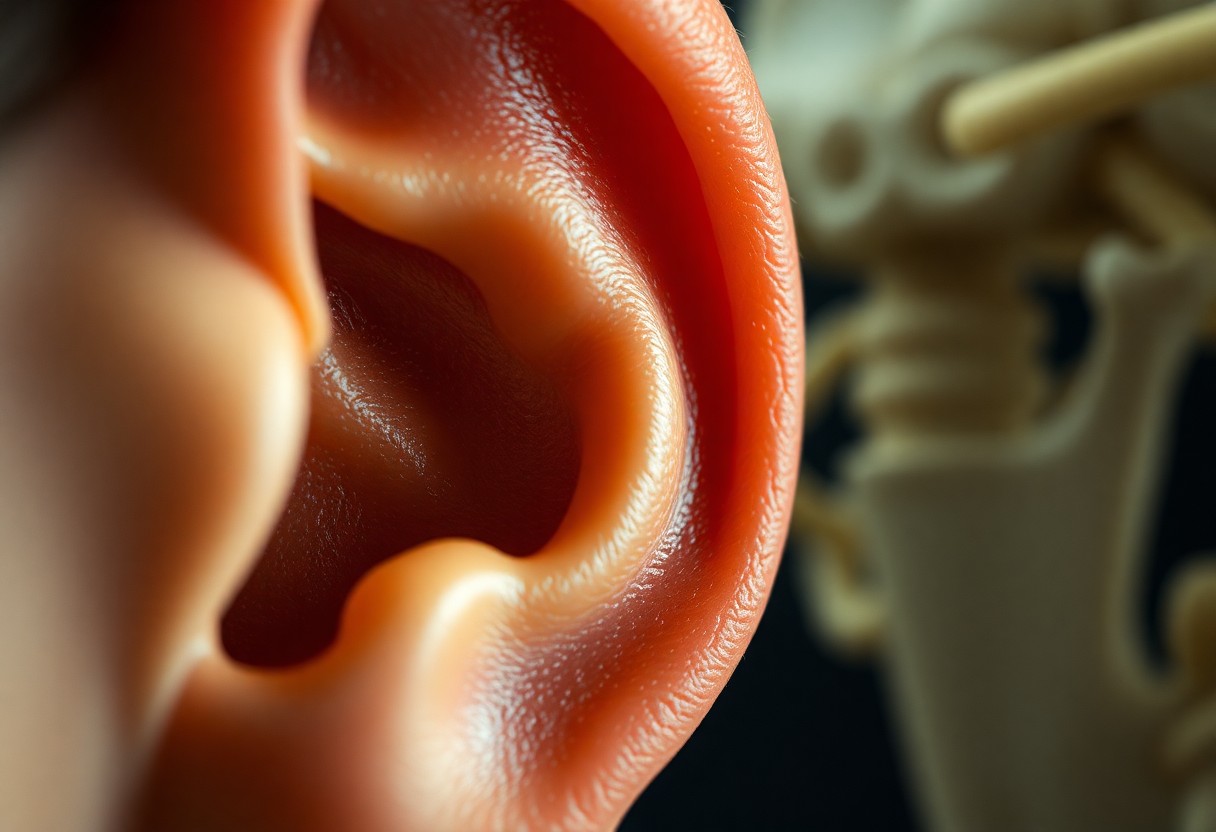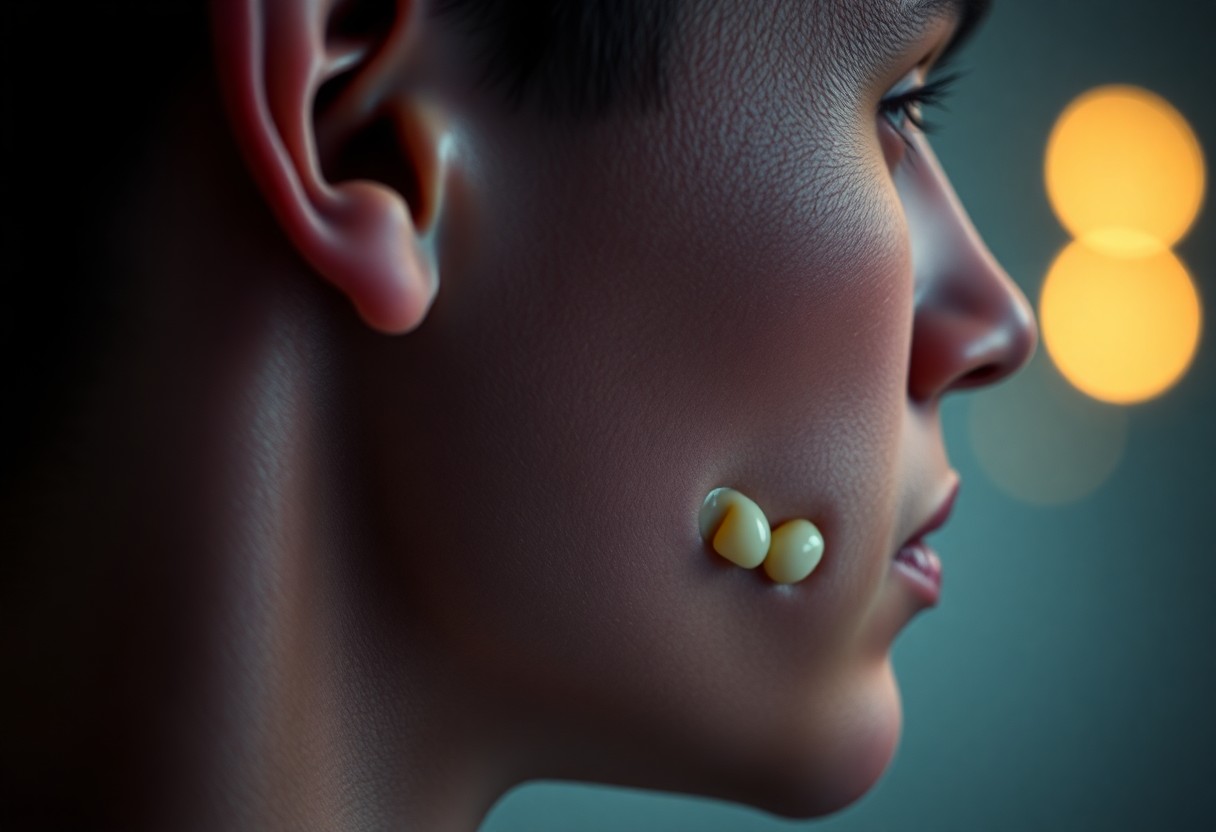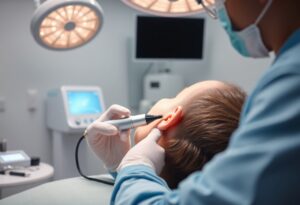Jaw movements play a significant role in the natural process of earwax removal. As you chew, talk, or yawn, the motion stimulates your ear canal, helping to dislodge and push out accumulated earwax. This natural mechanism is important for maintaining ear health, as it prevents blockage and potential hearing issues. Understanding how your jaw aids in this process can empower you to appreciate your body’s self-cleaning capabilities and guide you in proper ear care practices.
Key Takeaways:
- The movement of the jaw stimulates the glands in the ear canal, facilitating earwax production and expulsion.
- Chewing and talking can help dislodge old earwax, encouraging its natural migration out of the ear.
- A healthy jaw movement supports ear hygiene by assisting in the regular clearance of earwax buildup.

The Anatomy of Earwax and Its Functions
Composition and Types of Earwax
Earwax, or cerumen, is primarily composed of secretions from sebaceous glands, sweat glands, and dead skin cells. There are two main types: wet and dry earwax, which depend on genetic factors. Wet earwax is yellowish and sticky, while dry earwax appears gray and flaky. Variations exist based on individual differences in perspiration and skin type, influencing consistency.
- Wet earwax is more common in populations with African and European ancestry.
- Dry earwax is prevalent among East Asian populations.
- Earwax acts as a natural lubricant for the ear canal.
- It prevents the formation of blockages by trapping debris.
- Any variations in earwax type can reflect your genetic background.
| Type of Earwax | Characteristics |
|---|---|
| Wet | Yellowish, sticky texture |
| Dry | Gray, flaky texture |
| Normal | Balance between oil and desquamated skin |
| Excessive | Built-up, can cause blockages |
| Impacted | Hard and compacted, may require medical intervention |
The Role of Earwax in Ear Health
Earwax plays a vital role in maintaining ear health by providing a protective barrier against dust, debris, microorganisms, and foreign bodies. It helps to moisturize the skin of the ear canal, preventing dryness and irritation. Proper earwax levels contribute to the self-cleaning mechanism of the ear, ensuring a healthy audio environment.
This protective function of earwax also includes its antimicrobial properties, which help to inhibit the growth of harmful bacteria and fungi within the ear canal. The acidity of earwax acts as a natural deterrent against infections. In effectively managing moisture levels and trapping contaminants, earwax prevents issues like infections, hearing loss, or discomfort. Your body’s natural production and elimination of earwax ensure the ears remain clean and functional, preserving auditory health over time.

The Jawbone’s Unexpected Role in Earwax Clearance
Anatomy of the Jaw and Its Connection to the Ear
Your jawbone, or mandible, plays a significant role in more than just chewing. It connects to your skull through the temporomandibular joint (TMJ), located near your ear. This close anatomical relationship means that any movement of the jaw can influence surrounding structures, including those involved in the ear canal. The proximity of the TMJ to the ear provides a direct link between jaw activity and ear health.
How Jaw Movement Impacts Earwax Movement
Chewing: The Natural Ear Cleaner
The Mechanics of Chewing and Jaw Movement
Chewing involves complex movements of the jaw that engage multiple muscles, including the masseter and temporalis. As you grind and crush food, these muscles contract and relax, creating a pumping action. This dynamic movement not only assists in digestion but also exerts pressure on the ear canal. The constant motion helps to facilitate the natural migration of earwax toward the outer ear, effectively assisting in its removal.
The Scientific Link Between Chewing and Earwax Removal
Research highlights that the act of chewing stimulates earwax clearance through mechanical means. The movement of the jaw creates vibrations that may enhance the natural flow of cerumen, or earwax, toward the ear opening. This process is particularly effective in maintaining ear hygiene, as it minimizes the risk of blockage that can occur when earwax accumulates.
Studies indicate that consistent jaw movement, such as that experienced during chewing, prompts the skin cells in the ear canal to slough off more efficiently. This cellular turnover, combined with the physical dislodgment of earwax from chewing, makes it a practical method for maintaining ear health. Regular chewing, whether from meals or snacks, can thus serve as an involuntary ear-cleansing mechanism, reducing the need for invasive interventions.
The Link Between Jaw Dysfunction and Ear Health
Understanding TMJ Disorders
TMJ disorders involve dysfunction in the temporomandibular joint, impacting jaw movement and causing discomfort. Symptoms can include pain, stiffness, and clicking sounds. Studies show that around 12% of the population experiences these disorders, which may arise from factors such as stress, teeth grinding, or joint injury. This dysfunction can lead to a ripple effect, influencing other areas of health, including ear function.
How Jaw Issues Affect Earwax Buildup
Jaw dysfunction alters the natural movement of the jaw, which plays a significant role in the eustachian tube’s function. When you chew or yawn, the jaw helps open these tubes, promoting proper ear drainage. If your jaw is restricted or immobile due to TMJ issues, earwax removal may be compromised, leading to a higher likelihood of buildup.
In cases of TMJ disorders, the restricted jaw movement prevents the natural rhythm needed for effective earwax expulsion. The impact on the eustachian tube can create pressure imbalances, promoting further wax accumulation. This buildup can cause discomfort, hearing issues, and even infections. Addressing TMJ problems, therefore, not only alleviates jaw pain but also restores a vital function that keeps your ears healthy and clear of excess wax.
Practical Tips for Supporting Natural Earwax Removal
- Chew gum or practice jaw exercises regularly.
- Maintain an adequate hydration level to support overall ear health.
- Incorporate omega-3 fatty acids in your diet for optimal earwax consistency.
- Avoid inserting foreign objects into your ears.
- Schedule regular check-ups with a healthcare professional.
Knowing the natural movements of your jaw can facilitate the movement of earwax, promoting its natural expulsion. Simple exercises like opening and closing your mouth, or moving your jaw side to side, help in stimulating the glands that produce earwax, encouraging effective removal without intervention.
Methods to Enhance Jaw Movement
To improve jaw movement, consider incorporating specific exercises such as chewing on tougher foods, including raw vegetables. This not only strengthens the jaw muscles but also promotes the natural process of earwax evacuation. Additionally, practicing gentle stretches of the jaw can increase flexibility and mobility, further enhancing the movement necessary for expelling earwax.
Dietary Considerations That Promote Ear Health
A diet rich in whole foods supports ear health by ensuring proper lubrication of the ear canal. Foods high in vitamin A, such as carrots and spinach, maintain healthy skin, while zinc sources from nuts and seeds boost immune function, impacting ear health positively. Omega-3 fatty acids found in fish help maintain optimal earwax consistency, preventing excessive buildup that can lead to blockages.
The Role of Habitual Actions Beyond Chewing
Impact of Regular Movements on Earwax Clearance
Your daily jaw movements, whether through chewing, speaking, or even yawning, greatly influence earwax clearance. These habitual actions create vibrations and pressure that stimulate the ear canal. As the jaw moves, the surrounding muscles and tissues help push earwax toward the outer ear, preventing buildup and promoting natural expulsion.
Observations from Different Cultures
Expanding on those observations, in places like Japan, the practice of ear cleaning often involves an ear pick along with jaw movements that enhance the efficacy of the process. Similarly, Indigenous communities may use traditional songs and dances not only as artistic expression but as a way to promote rhythmic jaw movement, underscoring the belief in holistic body health. These cultural practices emphasize a collective understanding that addressing earwax buildup isn’t solely about cleanliness but is part of broader wellness through regular, mindful physical activity.
Exploring Myths: Misconceptions About Earwax Removal
The Dangers of Q-tips and Other Common Practices
Using Q-tips can lead to the compaction of earwax, pushing it deeper into the ear canal and increasing the risk of blockage or injury. Other practices, such as using hairpins or cotton swabs, can result in tears in the delicate skin of the ear canal and even damage the eardrum.
- Q-tips can cause impacted earwax.
- Using pointed objects can injure your ear canal.
- Flushing with water can lead to infections if not done properly.
- Relying on over-the-counter drops may not address the underlying issues.
- Assume that your body naturally finds ways to manage earwax buildup.
Debunking Myths Surrounding Earwax Hygiene
Misconceptions regarding earwax removal persist despite medical advice against certain practices. Many believe that earwax is an enemy that must be eradicated entirely; however, it serves protective roles. The misconception that frequent cleaning is necessary can lead to overzealous actions that harm rather than help. In fact, most individuals can rely on their body’s natural processes to manage earwax effectively.
Final Words
With this in mind, understanding how your jaw aids in the movement of earwax can enhance your awareness of ear health. As you chew or move your jaw, the vibrations and movements stimulate the outer ear canal, promoting the natural expulsion of earwax. This process helps keep your ears clean and reduces the risk of blockage. By being mindful of your jaw’s role, you can support your body’s mechanisms for maintaining ear hygiene effectively.
FAQ
Q: How does jaw movement help in earwax removal?
A: The movement of the jaw, particularly during chewing or talking, creates vibrations and shifts the earwax within the ear canal, facilitating its natural migration towards the outer ear.
Q: Can jaw exercises improve earwax clearance?
A: Yes, performing regular jaw exercises can enhance the movement of earwax by stimulating the surrounding structures and promoting the natural expulsion of earwax from the ear canal.
Q: What role does earwax play in ear health?
A: Earwax serves to lubricate the ear canal, trap dust and debris, and has antibacterial properties that protect against infections, making its removal important for maintaining ear health.
Q: Are there any risks associated with excessive earwax buildup?
A: Yes, excessive earwax can lead to blockage, hearing loss, discomfort, and increased risk of infections, which is why the natural movement induced by the jaw is beneficial.
Q: What should I do if I have a lot of earwax buildup?
A: If experiencing significant earwax buildup, consult a healthcare professional for safe ear wax removal methods, while promoting jaw movement through activities like chewing may help in regular maintenance.



